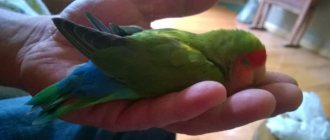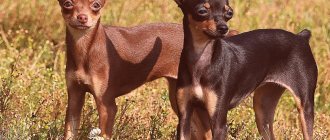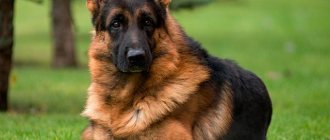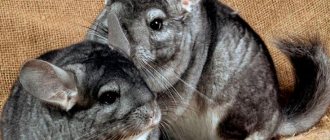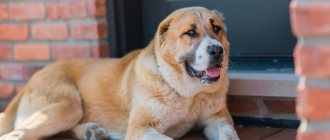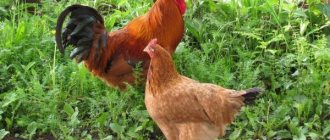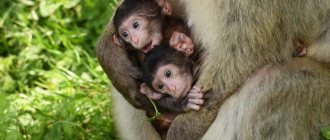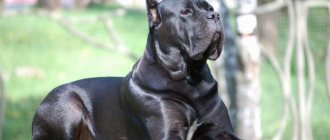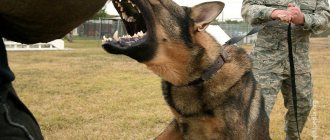The Pekingese is a small breed of dog native to China.
Its representatives are proud and independent, and practically impossible to train.
Many note that a long stay in the imperial palaces of China left its mark on the genetics and character of the dog.
They are imposing, leisurely and rather capricious.
Such pets are not highly intelligent and are able to learn only the simplest commands.
At the same time, Pekingese are quite densely built, have good health and live quite a long time.
Height at the withers reaches 20 cm, weight – 5 kg, life expectancy 15-20 years.
Life expectancy for boys and girls at home
Representatives of the Pekingese breed confirm the rule that small dogs live longer than others. So their average life expectancy is 15-18 years, while some individuals live up to 22 years.
Here it is worth saying that life expectancy is influenced by factors such as:
- Floor.
- Conditions of detention.
- Number of matings and births (for bitches).
- Nutrition.
- Past illnesses.
- Heredity, etc.
For example, males and females involved in breeding live less . Thus, male sires live on average 15-16 years, and females that often give birth live 14-15 years.
Miniature pets weighing up to 3 kg should be included in a special group; such individuals, as a rule, live up to a maximum of 13 years.
There is no separate line of mini or dwarf varieties within the Pekingese breed . Miniature pets are born from time to time in regular Pekingese litters.
Expert opinion
Kozhevin Semyon Kirillovich
Expert dog handler.
“Despite their fastidiousness, Pekingese are distinguished by good health and can live for quite a long time. In my practice, there have been cases when dogs lived up to 20 years. But for this it is necessary to create conditions, as well as teach the dog to be as obedient as possible. Indeed, often, due to disobedience, Pekingese find themselves in situations where their lives are significantly shortened.”
Factors influencing lifespan
Many people are interested in how long do Pekingese dogs live in Russia? On average, they live up to 15-18 years, but cases have been recorded when dogs reached the age of 20-22 years. There are many factors that influence the lifespan of Pekingese. The main and most influential:
- hereditary characteristics of the parents;
- genetic predisposition of the breed to various diseases, diseases suffered by the pet during life;
- individual conditions of detention and care;
- sex of the individual;
- number of matings for males and births for females;
- food quality.
Genetics as a factor in dog longevity
How long do Shar Peis live at home?
Genetics plays a critical role in the behavior and health of any dog. From their parents and previous generations, puppies inherit the characteristics of maturation and bone formation, as well as those associated with the rate of aging of the body. Therefore, future Pekingese owners should take care in advance to obtain information about the puppy’s breed line and find out what diseases its ancestors suffered or are suffering from.
If someone in a Pekingese pedigree has suffered a stroke or had heart disease, the pet's likelihood of early death increases. You need to judge not only by the puppy’s parents, but also by grandparents, blood brothers, sisters, uncles and aunts.
Physiologically, Pekingese have a miniature nose and narrow nostrils, significantly narrower compared to long-nosed dogs. And with narrow nostrils it is harder to breathe. Although snub nose is considered a sign of the breed, it is still better to give preference to a puppy with wider nostrils, when there is no feeling of squeezing the nasal passage. Hereditary problems with the spine are no less dangerous, usually resulting in disc deformation.
Eye diseases are common among the breed, but do not affect life expectancy. The dog needs the owner’s attention to the problems that arise, because blindness significantly worsens the quality of life.
Note! Good home care and quality maintenance is the best prevention of all dog diseases, even hereditary ones.
Physical activity and life expectancy of Pekingese
Pekingese are not an active breed of dog; they are very lazy and love to be in a comfortable home environment. You still need to walk your pet for at least half an hour twice a day. This minimal physical activity will help you avoid problems with excess weight.
Long walks in the fresh air are beneficial
A good workout for the cardiovascular system of dogs is prolonged play in the fresh air. And the owner’s attention and participation in games will give the pet a good psychological mood, which is very important for improving its quality of life.
Note! Active walks not only solve the problem of excess weight, but also prevent problems with the respiratory system. There are cases where obese Pekingese dogs' lungs stopped functioning during sleep.
Does childbirth affect life span?
It is no secret that childbirth and the process of feeding puppies greatly wears out a bitch’s body. Very frequent childbirth is especially dangerous; it usually leads to dire consequences. Mating is contraindicated for individuals that are too young and already in old age.
Sterilization in this regard is an excellent way to extend the life of a pet if it is not required to reproduce offspring. This procedure has been proven to reduce the risk of genital cancer, balance the dog’s character and increase the dog’s resistance to stress.
Systematic birth of puppies shortens the life of their mother
Age compared to human years
| Dog age | Human age | |
| Months | Months | |
| 1 | 6 | |
| Years | ||
| 2 | 1 | |
| 3 | 2 | |
| 4 | 3 | |
| 5 | 4 | |
| 6 | 5 | |
| 7 | 7 | |
| 8 | 9 | |
| 9 | 10 | |
| 10 | 11 | |
| 11 | 13 | |
| Years | 14 | |
| 1 | 24 | |
| 2 | 30 | |
| 3 | 36 | |
| 4 | 40 | |
| 5 | 42 | |
| 6 | 49 | |
| 7 | 56 | |
| 8 | 63 | |
| 9 | 65 | |
| 10 | 71 | |
| 11 | 75 | |
| 12 | 80 | |
| 13 | 84 | |
| 14 | 87 | |
| 15 | 89 | |
| 16 | 91 | |
| 17 | 93 | |
| 18 | 95 | |
| 19 | 97 | |
| 20 | 100 | |
Survey of the month
Who is smarter than a cat or a dog?
Read the expert opinion here
Liked? Please rate the article!
To main
Pekingese are a worldwide breed with an interesting history of origin. How long Pekingese live at home depends on many factors. Some of them can be controlled by providing the pet with proper care, others cannot. Every owner who loves his four-legged friend wants to do everything in his power to maintain the normal health and condition of the dog.
How to determine the age of a Pekingese?
The age of a Pekingese can be easily determined by carefully looking at the dog's appearance.
First of all, you should pay attention to your teeth. The young pet's teeth are white, glossy with unworn tubercles.
In older dogs (2-3 years), the teeth acquire a matte tint, and the tubercles on the toes are gradually erased.
By the age of 5, the cusps on the lower incisors wear off in Pekingese, the fangs become dull, and the teeth acquire a yellowish tint.
At 8-10 years old, the crowns of the dog’s teeth are worn away by almost half, the fangs are dull, and the teeth are yellow.
In older dogs, teeth begin to loosen and fall out..
Also, to determine the age of the pet, you should pay attention to the coat and condition of the muscles. Young pets are distinguished by clean, silky, shiny coat, developed muscles and activity.
An older dog's coat is coarser, gets dirty faster and has a dull appearance . As for the muscles, often in an older dog they are atrophied, there is excess weight, laziness and apathy.
Symptoms of a boil
Boils can appear anywhere, but they most often occur in areas where there is hair, sweat, and friction. Boils often form on the face and neck, under the armpits, on the genitals, thighs and buttocks.
First, a red spot appears on the skin around the hair root, the skin above which swells and becomes dense. Pain appears. The boil increases in size and a purulent cavity forms in its center, which is usually visible through the skin in the form of a yellowish “head”. Above the purulent focus, it is usually possible to see a darker purulent-necrotic core.
Most often, after some time, the boil opens and pus flows out. After this, relief comes, the pain goes away and the skin gradually heals. A barely noticeable light scar forms at the site of the boil. This process can take from two days to three weeks
It is very important not to squeeze out the boil, as this leads to serious complications.
Main causes of premature death
The main causes of premature death in Pekingese include::
- Infectious and hereditary diseases.
- Poisoning.
- Diseases of the spine, in particular herniated discs, leading to partial or complete paralysis.
- Oncological diseases.
- Infections (staphylococcus, leptospirosis, adenovirosis, infectious hepatitis, rabies, parvovirus enteritis, plague, etc.)
- Injuries, including those received in fights with other dogs.
Preparing for the arrival of a puppy
Caring for a Pekingese at home is not difficult if you know and follow certain rules.
First you need to clean up the room. Hide the wires in a special box. Puppies have itchy teeth, so they chew everything that gets in their way. You should also remove shoes and all small objects that are placed on the floor.
Caring for a Pekingese puppy begins with choosing the right place for the pet. The litter should be placed in a quiet, dry place, hidden from drafts.
It is worth remembering that these dogs overheat very easily. If in the summer the temperature in the apartment rises above 20 degrees, this will greatly affect the puppy’s health. Therefore, it is better for people who have air conditioning at home to have such pets. If high temperatures do not last long, wet bedding will save your pet from overheating.
Buy two bowls: one for food and one for water. They should be heavy enough so that your pet cannot turn them over. The baby must have toys.
When the puppy grows up, you need to buy special clothes that will protect from rain and snow.
How to extend life?
In order for a dog to live longer it is necessary:
- Visit the veterinarian regularly (at least once every six months).
- Carefully monitor changes in your pet’s behavior and well-being; if there is the slightest deviation, you should contact a veterinarian.
- Start raising a Pekingese from puppyhood, because they often find themselves in unpleasant situations because of their character. Pekingese often get into fights with other dogs or get hit by cars.
- Do not allow your dog to pick up scraps on the street; such food often causes poisoning.
- Your pet should be vaccinated annually and follow all veterinarian recommendations.
- Proper and balanced nutrition will help the Pekingese stay healthy for many years, and therefore increase its life expectancy.
- Under no circumstances should the Pekingese live outside, as this is an exclusively decorative breed and yard conditions are not suitable for it.
How many times a day should I feed?
The number of meals depends on the age of the animal. As the puppy grows, they are fed less and less, gradually moving towards two meals a day.
Up to 1.5 months, food is given 6 times a day, even at night, because puppies can only eat a small portion at a time. Subsequently, the frequency is reduced:
- from 1.5 to 3 months – 5 times;
- from 3 to 6 months – 4 times;
- from 6 to 12 months – 3 times.
A one-year-old Pekingese is considered an adult. It is enough to feed him only in the morning and evening. If you don't walk or play with your dog much, it is acceptable to limit yourself to one meal.
The daily amount of food is calculated using the formula: 70 g of feed per 1 kg of weight.
For example, an adult Pekingese weighing 4 kg should be given 280 g of food per day.
However, each dog is individual, so the owner must monitor its condition. You should not allow yourself to gain excess weight, because this is fraught with problems with digestion, heart and blood vessels.
Proper nutrition
When choosing a diet for the Pekingese, you should take into account the characteristics of this breed. The fact is that they have some underdeveloped fangs. Therefore, meat for them should be minced in a meat grinder, and it is better to refuse dry food or pre-soak the granules.
It is advisable to lightly boil meat and offal for Pekingese to avoid helminths from entering the dog’s body..
It is also worth saying that cheese is very useful for your pet, but it is given occasionally, only as a reward.
A boiled egg and fresh vegetables are also very beneficial for Pekingese. But, there is one condition - he can only be given vegetables that do not cause bloating (carrots, zucchini, pumpkin, cucumber or bell pepper).
Sometimes your pet can be pampered with boiled, lean, boneless sea fish.
But fermented milk products (kefir, yogurt, cottage cheese) should be given separately from other foods.
NOTE!
If you feed your pet canned meat, it is advisable to mix it with boiled rice or vegetables.
Prohibited Products:
- Sausages and smoked meats.
- Chocolate.
- Flour products and sweets.
- Bones.
- Potatoes, cabbage, exotic fruits, onions, legumes.
- Pickles and marinades.
- Fat meat.
Story
Why the breed received this name is anyone's guess. Beijing is the well-known capital of China, and it was there that the rulers of the country lived, whose attribute were small dogs. The word “attribute” was not chosen by chance. No other dog in the world has been awarded such honors. Almost every pet had several servants at once. They ate exceptional dishes, which were presented on golden trays. The most amazing thing is that Eastern people developed very quickly in many branches of science. In those days, no one had even heard of genetics and the basic principles of cynology, but the selection of puppies for further breeding was very careful. Thus, the breed developed correctly, avoiding unnecessary defects.
Only Chinese emperors could own Pekingese dogs.
Any person, no matter whether it was an ordinary peasant or a high-ranking official, could be subject to the death penalty if he illegally obtained a precious puppy.
And there was only one legal path - to become worthy of the imperial favor.
There are no earlier historical facts, which means we have a wide field for imagination. One of the legends tells us about the love passion that broke out between a lion and a monkey. The result of such an amazing union was small lion-like dogs with a monkey's face. Another legend tells that Buddha decided to give humanity a gift, and did not find anything more useful and valuable than our heroes. The list of incredible versions about the origin of the imperial four-legged friends can be continued, but all of them will be far from the truth. Today there is no doubt left about the fact that the Pekingese were artificially bred at the behest of the reigning persons.
They were called "Fu" back then. Short, but not very attractive. In addition to their decorative function, they also played a sacred role. Together with the deceased ruler, his faithful pets were also supposed to go to another world. This is why small dog skeletons are so often found in burials.
It is unknown whether the animals were killed before burial or whether they were placed in the grave alive. This ritual had to take place because the Chinese believed that it was these unusual small animals with a lion’s mane and a monkey’s face that were able to save a person from his earthly sins, thereby cleansing him before the face of God.
During the capture of the summer palace by the British, soldiers broke into the empress's chambers and found her lifeless body. The ruler chose death over capture by foreigners
Several unusual dogs were sitting next to the owner, which attracted the attention of the British. They took their trophy and the Pekingese were later presented to Queen Victoria.
So, for the first time, our heroes were able to cross the border of their historical homeland and move from east to west.
Now the life of privileged people has changed dramatically. Instead of servants and gold trays, the Pekingese had to serve as a watchdog, hunting dog, pet of the nobility and common farmers.
It should be noted that at that time the appearance of animals was very different from what we are used to today. Significant changes befell the breed along with fashion trends of different eras. At one time, dogs with a strongly flattened muzzle were held in high esteem, as a result of which our heroes were expected to undergo a transformation. It was the European period that became a time of change. As a result, we have many varieties and even several standards. The standards adopted in 1966 by the Fédération Cynologique Internationale are still in effect.
Quality maintenance and care
Before you buy a Pekingese, you should know that this dog requires care, which includes:
- Keeping the coat trimmed, especially around the paw pads and between the toes, the Pekingese also needs regular grooming.
- Daily walks. The pet should be walked daily, 2 times a day for at least half an hour.
- Nail cutting with a special nail clipper should be done at least once every 2-3 weeks.
- Eye care requires special attention, the reason is the specific structure of the eyes. Due to the shortened tear duct, the dog's eyes are susceptible to injury and inflammation. For this Pekingese, the folds lying on both sides of the bridge of the nose are washed daily with a special solution.
- The dog's ears also need daily inspection and regular cleaning with a dry cotton pad.
- The Pekingese's coat should be brushed daily using a dog brush. It is also advisable to use a special aerosol for combing, which protects the hairs from splitting.
- You should bathe your dog when it gets dirty, using dog shampoo for long-haired breeds.
The Pekingese's coat is quite coarse, so it is advisable to use cosmetics designed specifically for hard and coarse coats..
Diseases
Most of the diseases common among Pekingese are associated with structural features of the skull. The functioning of the respiratory system, eyes, and other organs may be impaired due to anatomical reasons. The most common diseases are:
- Ocular. The cause of these ailments is obvious. One has only to look at the peculiar structure of the animal’s muzzle: it is too short. As a result, the eye orbits are not as deep as they should be, and the organ of vision appears to protrude excessively outward. If you respond to atypical symptoms in time and continue to properly care for your eyes, you can avoid surgical intervention, sometimes fatal.
- Breathing disorders. Another negative feature of a flattened muzzle is the inability to breathe normally. Laryngitis, bronchitis, and other diseases of the ENT organs are common among Pekingese. The pet will survive outside in severe frost, but the consequences may be irreversible.
- Spinal diseases. Intervertebral hernia and osteochondrosis are the most common of them. Dogs can also suffer from frequent dislocations and lameness.
- Diseases of the digestive system. The Pekingese has a stomach ache for various reasons: due to food poisoning, acute, chronic ailments of the abdominal cavity. When a pet is suffering from pain, the owner can only determine this fact on his own - when touched, the dog whines especially strongly and tries to hide.
The veterinarian can determine his condition by touch: a belly like a drum, a hard belly, a bloated belly - all these symptoms will help diagnose and cure the disease. Independent attempts to alleviate the condition can harm the animal.
Caring for an older dog
Caring for an older dog is somewhat different from caring for a young dog.
The thing is that with age, the character and needs of a pet change, and it needs special care and attention.
First of all, an older dog experiences changes in the musculoskeletal system; the dog moves less and sleeps more..
Therefore, the walking regime should become more gentle. Walks should be made shorter and without physical activity.
In addition, an elderly dog’s eyesight often deteriorates, it can bump into objects or have difficulty oriented in space, so such a dog should only be walked on a leash.
Also, for an older dog, changes should be made to the diet; if necessary, portions should be reduced so that the dog does not gain excess weight.
Some recommend switching pets to special food for aging dogs.
An older dog should be bathed less often, as it is more likely to catch a cold.
You should also make sure that the pet’s place is comfortable and he can sleep on it stretched out to the full length of his body. If your dog cannot control urination or bowel movements, do not scold him.
Just place a rubber mat under the bedding and wash it often.
As can be seen from all that has been said, Pekingese are quite unique dogs, they love care and need constant care. In addition, they are slightly arrogant and stubborn, but with the right approach, they love their owner immensely and are devoted to him.
The Pekingese is a dog for older couples and owners who do not like excessive activity . Also, this breed is quite suitable for families with children over 5 years old.
Accessories necessary for a pet
It is important for the Pekingese to have his own secluded place where he can rest and hide his toys. But at the same time, it is necessary that this place is not in the corridor or in the kitchen, but in close proximity to the owners
Place a Pekingese dog bed or house in the bedroom, as the dog will constantly come to you. Your pet will need the following essential accessories to maintain comfort:
- Bowls for water and food. They should be in the kitchen, heavy in weight (iron or ceramic) so that the dog does not turn them over. There should be clean water in the bowl at all times.
- A tray that will be used during quarantine after vaccination or during an animal illness when walking is prohibited.
- In autumn and winter, they walk in overalls and clothes for Pekingese, which are designed to protect them from dirt, since the dog is short in stature with short legs.
Advice! The overalls should be made of bolognese fabric with a silk or satin lining. Synthetic materials are undesirable, as the dog may develop allergies and scratch the skin until it bleeds.
After each walk in the suit, you only need to wash the paws and the area under the tail.
For walks you need a collar - thin and light. To avoid rubbing the fur on the neck, choose collars made of nylon or genuine leather. The correct size of this piece of equipment is when a finger is placed between the dog's neck and the collar. Then nothing will squeeze the animal’s neck or rub it.
- The leash can be made of nylon, canvas or braid. The maximum length is 5 meters. The Pekingese can also be walked on a roulette wheel, but strict collars are not suitable for this breed.
- A carrier is an important accessory that is necessary for trips to the doctor, out of town, or for your dog to travel on a train.
- Dog toys should be soft (such as silicone or rubber) and not contain metal parts.
- To care for the coat, you need an arsenal of products: shampoo, conditioner, shampoo for daily washing of paws (for example, baby shampoo), several types of combs.
- A nail clipper and small scissors with rounded ends are needed for hygiene procedures, which the puppy is taught to do immediately.
- To protect against ticks you will need drops, shampoos and sprays.
Breed Features
The Pekingese dog is a beautiful, long-haired animal with a flattened muzzle. He has very big eyes. It feels like a dog is looking straight into a person’s soul. A lot of time and effort was spent on breeding this breed.
Do not look at the fact that the Pekingese is a small dog, but its character is not always calm. If an animal gets angry, it can bite, and its teeth are sharp. Very often, sellers call the dogs Royal Pekingese to attract buyers. In fact, this is the most common breed
It’s just that such a high-ranking status attracts the attention of those who want to get a pet
There is another breed - the dwarf Pekingese. If you want to buy a dog for a show, then this is not the right dog for you. There is an opinion that dwarf Pekingese are a failed brood, that is, rejected. Therefore, they are not allowed to enter the exhibition.
Breed Features
The Pekingese dog is a beautiful, long-haired animal with a flattened muzzle. He has very big eyes. It feels like a dog is looking straight into a person’s soul. A lot of time and effort was spent on breeding this breed.
Do not look at the fact that the Pekingese is a small dog, but its character is not always calm. If an animal gets angry, it can bite, and its teeth are sharp. Very often, sellers call the dogs Royal Pekingese to attract buyers. In fact, this is the most common breed
It’s just that such a high-ranking status attracts the attention of those who want to get a pet
There is another breed - the dwarf Pekingese. If you want to buy a dog for a show, then this is not the right dog for you. There is an opinion that dwarf Pekingese are a failed brood, that is, rejected. Therefore, they are not allowed to enter the exhibition.


